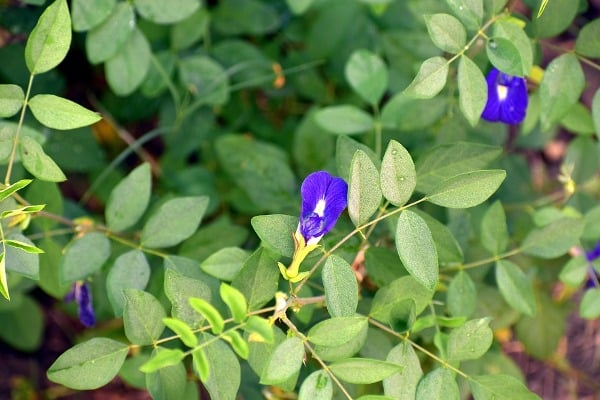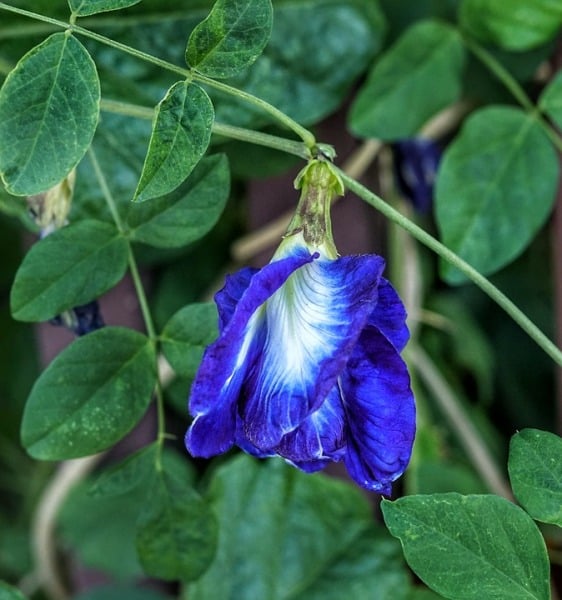Cultivation of Asian Pigeonwings/Clitoria Ternatea:
Today, let us get into details of growing Clitoria Ternatea or Cultivation Of Asian Pigeonwings.
- Clitoria ternatea, which is termed as Asian pigeonwings, blue butterfly pea is a climber which is evergreen.
- It belongs to the family of Fabaceae. Asian Pigeonwings is one among the four herbs which are used as Shanks Pushpi in a traditional way. Shankha pushpi is a medicine belonging to Ayurveda and it is used to improve neurological health.
- Asian pigeonwings is grown as an ornamental plant.
- It is also grown as re-vegetation species which need proper care at the time of cultivation.
- As this is a legume, the roots of Asian pigeonwings form a relationship with soil bacteria which would be advantageous to both. This soil bacteria is called rhizobia.
- This bacteria will help in the transformation of nitrogen, which is available in the atmosphere into a form which can be used by the plant. Hence, this plant which uses the nitrogen will then improve the quality of the soil through the decomposition of the tissues which are rich in Nitrogen.
- Asian pigeonwings is one of the captivating climbers which are well used as a cover to the fence on a trellis or an archway.
- It is a perennial vine which flowers all around the year, abundantly with deep blue flowers which are attractive.
Classification of Asian Pigeonwings/Blue butterfly pea/Asian pigeonwings:
The family of Asian Pigeonwings: Fabaceae.
Genus of Asian Pigeonwings: Clitoria.
Species of Asian Pigeonwings: C. ternatea.
Binomial name of Asian Pigeonwings: Clitoria ternatea L.
Features of Asian Pigeonwings:

- Asian Pigeonwings is a species of Clitoria which is a tropical perennial. It grows as a vine by dividing into stems which are slender. Their length would be up to 3 meters. It takes the support of whatever thing which comes its way and develops as a creeper on the surface of the ground.
- This climber is herbaceous and leguminous. It produces leaves which have at least 7 leaflets which are as thin as paper.
- It has deep blue flowers which are very attractive and have a shape if clitoris. The length of the flowers will be between 3 cms to 5 cms and the width of the flowers will be between 3 cms to 4 cms. At the center of the flower, it has a pale yellow color or a completely white one. These flowers are single or sometimes paired.
- Asian Pigeonwings can be grown in warm or sunny regions anywhere across the world.
- The plants of Asian Pigeonwings live for a short period.
- It is slightly tolerant to salinity.
Read: Organic Vegetable Gardening Ideas, Tips, Care, Design.
Requirements of Cultivation of Asian Pigeonwings:
- It is easy to grow Asian Pigeon wings with minimum care.
- It grows very well in the sun, which is full. It can also grow in the shade mainly in the sun rays from hot afternoon. It can also grow in partial shade.
- The requirement for water to these plants is less. It is tolerant of drought. But it gives the best results when watered daily.
- The soil can be fertile to a moderate level and it must be moist. Asian Pigeonwings are adaptable to many types of soil conditions starting from sandy to heavy clays. The plants should not be watered too much as it cannot tolerate water logging for a too long time.
- Pinching can be done to keep the vine which is leggier and bushy. The Asian Pigeonwings should be fed with liquid fertilizer, which is balanced once in a fortnight. It can also be treated with fertilizer, which is granulated once in a month. These Asian pigeonwings are free from pests and diseases. But you need to monitor for caterpillars and grasshoppers as they eat the life of the plants.
For the regions which are temperate and Subtropical:
The Asian pigeonwings can withstand the temperatures of -1°C. It has less tolerance to frost. The stems of the Asian pigeonwings regrow after a heavy frost. In the regions which are very cold or the temperature is low, it would be best to grow these plants on a yearly basis and collect the seeds to plant it one more time for the next season. The seeds can be sown directly in the garden at the start of the spring in a soil which is moist and warm or you can also do the sowing of seeds in the indoors before the last frost occurs.
Cultivation of Asian Pigeonwings:
- Buy the cuttings or the seeds which are ready for rooting.
- Soak the seeds in water for up to 4 hours or overnight before starting to show them.
- The sowing can be done directly with a space of 4 inches.
- The germination of seeds takes place in 2 weeks and the flowering starts within 4 weeks after the plantation is done.
Uses/Benefits of Asian Pigeonwings:

The plants of Asian Pigeonwings have many uses.
- As they are very attractive, they can be used as ornamental plants and can be used as decor for fences, arbors or archways.
- It can be used as a hanging basket and it can also be grown in a container to decorate the decks or patios.
- It grows vigorously and it has the capability to increase the fertility of the soil. So it is perfect for the green manure or as a cover crop.
- It is an ideal one which can be used for the purposes of fodder, as pasture for livestock or as a species of revegetation in coal mines.
- The extracts from the blue flowers of Asian pigeonwings can be used as natural colorants in the industries of food, cosmetics, Pharmaceutics.
- These flowers are non-toxic and have the properties of antidote and antioxidant.
- Asian Pigeonwings help to increase the content of Acetylcholine and improves the ability of thinking in human beings.
- Asian Pigeonwings helps women in treating their irregular period’s issue. The flowers of the Asian pigeonwings solve the issues of reproduction in women.
- The Asian Pigeonwings consist of few components which will help in the improvement of the functioning of the nervous system in the human body.
- The most special feature of Asian Pigeonwings is that it can regulate the absorption of the blood sugar so that the level of blood sugar gets controlled in the patients who are getting treated with diabetes.
- This plant also helps in reducing depression in human beings.
- This plant also saves human beings from dangerous snake bites. This can be done when there is no doctor available in that area.
Read: Jamun Cultivation.